Grand Cherokee Can Learn From Land Rover Discovery

You’d think Jeep would have done this by now, especially when it comes to something as vital as breathing.
It’s easy to be a diehard Jeep guy and put the blinders on when it comes to other off-road adventurer brands. Especially ones that come from Europe like Land Rover.

However, it’s not hard to deny the heritage of the brand and what it’s done in innovative luxury off-roading. This is a brand who isn’t afraid of getting their tires dirty and even show it going places no upper-middle-class soccer mom would dare go. In doing so, they have created new ways to make sure the New Discovery can cross anything. Take the intake for instance. Could the new Grand Cherokee do something similar?
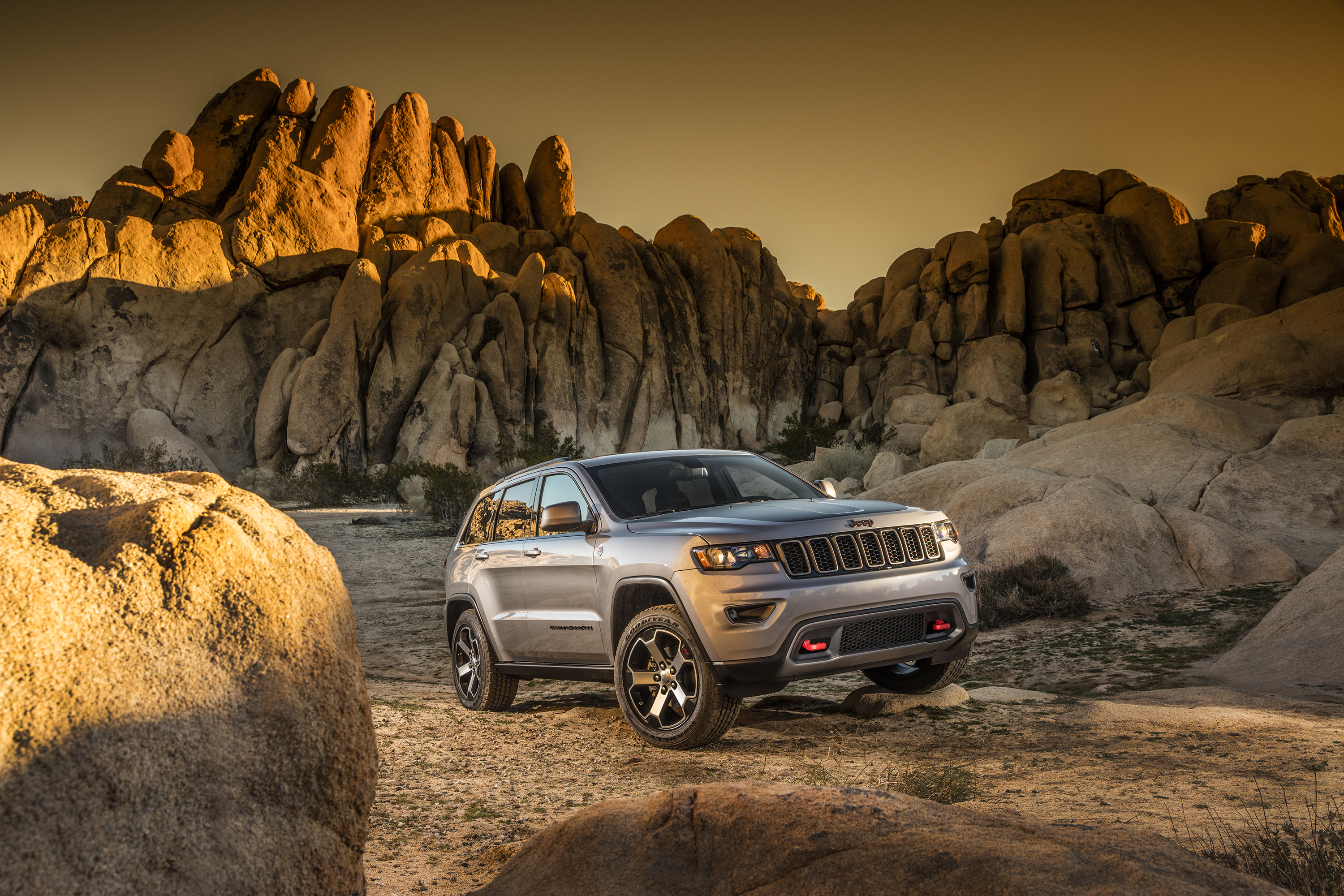
Don’t get us wrong, the Grand Cherokee is still a nice uni-body off-roading SUV and, if you’re not looking to go places where forty-inch tires and massive axle articulation are needed, it does a great job getting around. One of the things it could do better, though, is fording water above its grille. Get that close and you start risking sucking water into your intake and hydro-locking your engine. Not fun.

This is where the new Land Rover New Discovery shines. It can ford nearly three feet of water (900 millimeters for you Euro-types). It can do deeper but the rear tires begin to float unless there is a load in the back. You’ll notice it doesn’t have a snorkel installed, and will probably wonder how on Earth it’s able to do that. Well, the trick is between the hood and fender that makes you wonder, “Why didn’t someone else think of that first?”
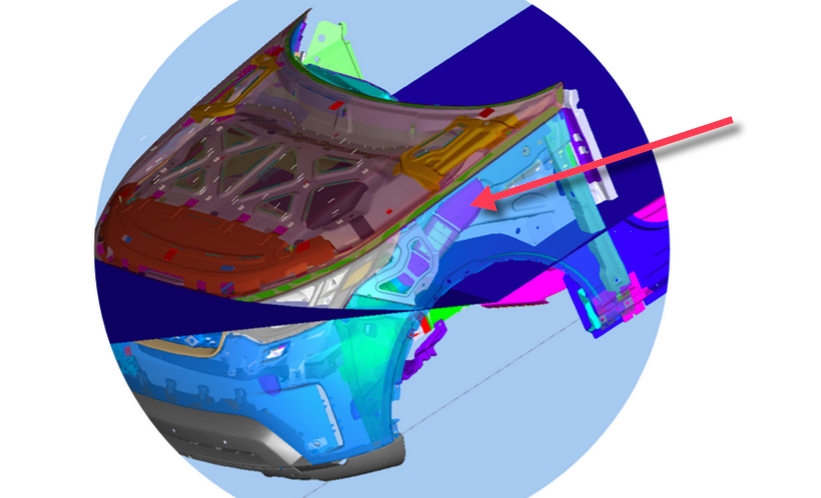
This CAD drawing shows a little bit of what we’re talking about. The air filter box is sealed to this intake tube on the inside of the fender, but instead of heading down to fetch cooler air, it goes deeper into the fender and pops back up under the hood on both sides of the New Discovery.
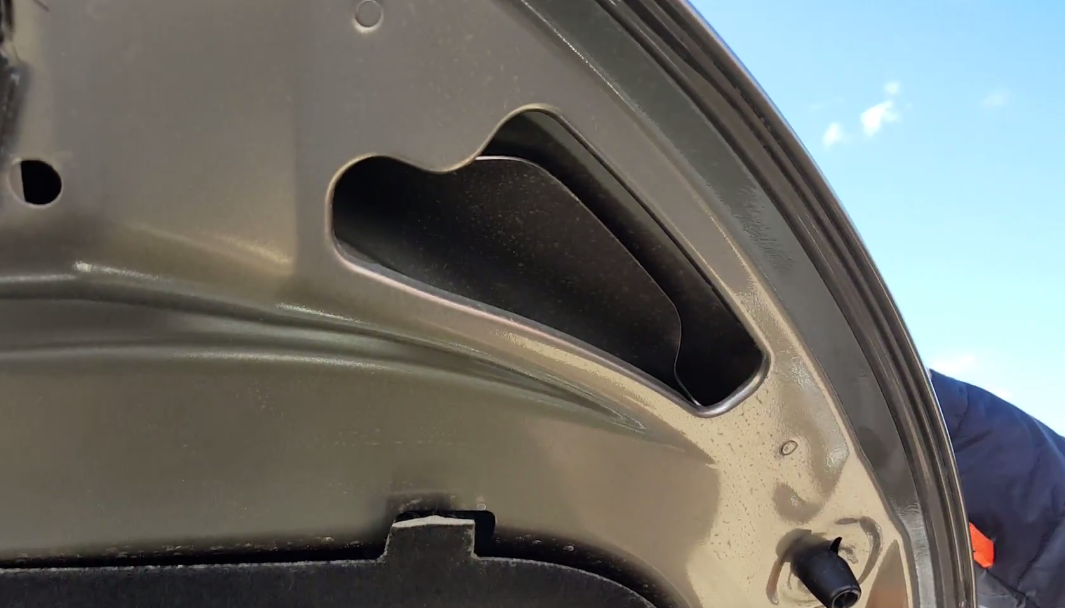
The path flows like this: air is brought in through the six-millimeter gap between the hood, fender, and headlight. It’s then pulled through the hood from a hole and path that starts near the hood latch.
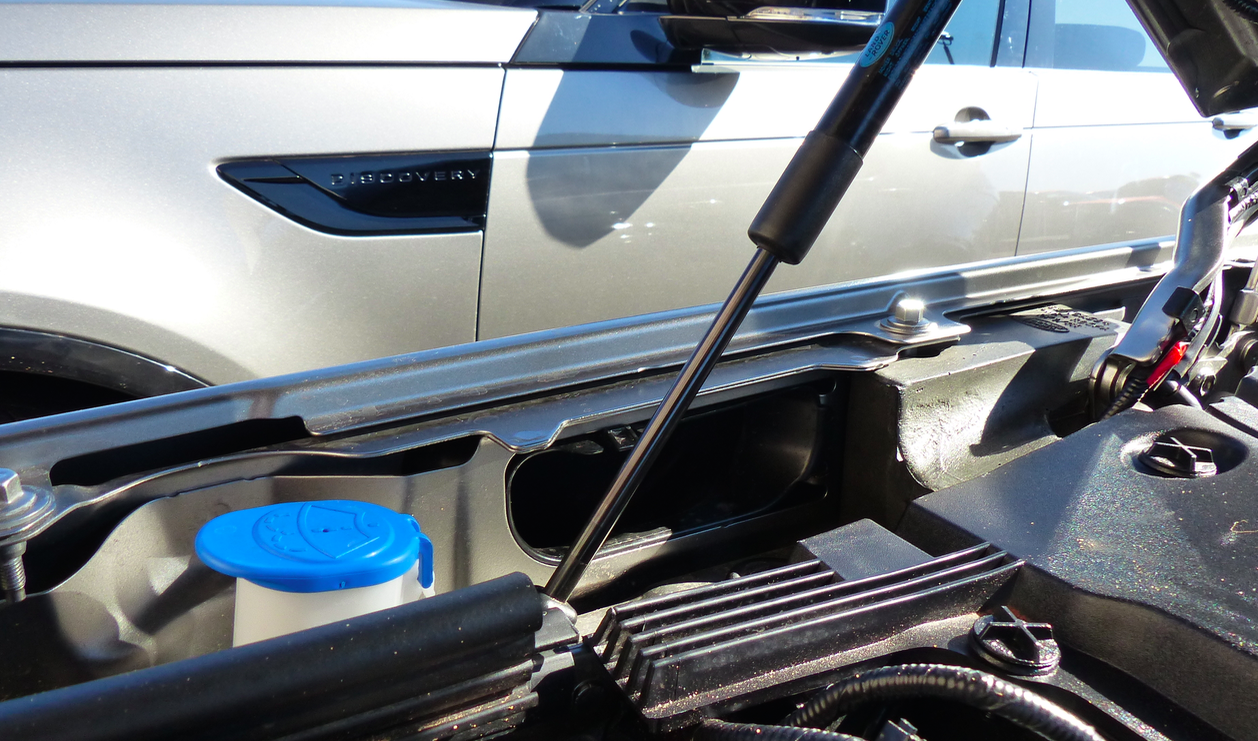
It then flows back to near the hood hinge to the “rabbit hole” and then follows the plenum shown in the CAD drawing earlier.
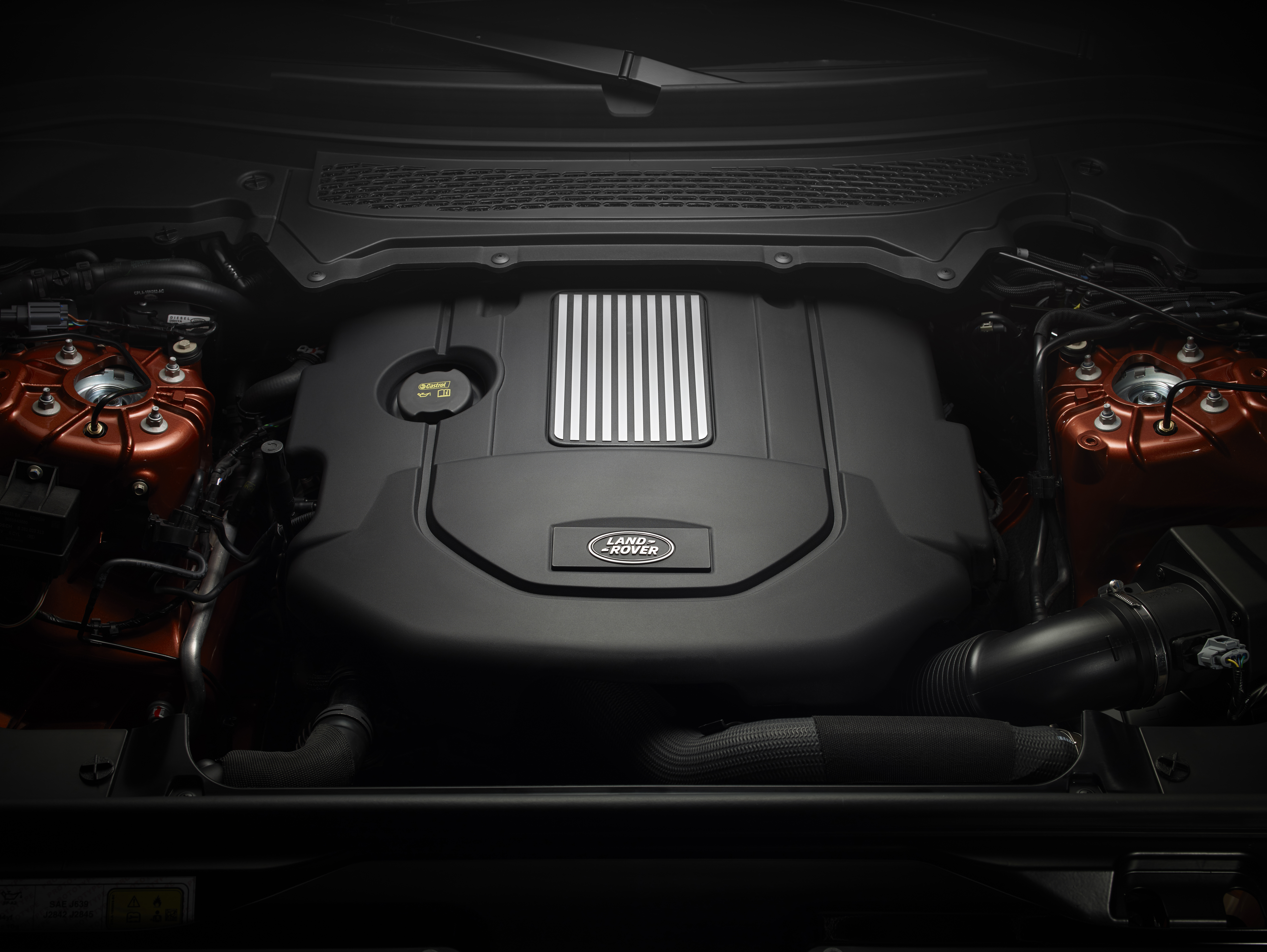
Then it finally hits the air filter box before going to the engine. This system not only makes sure that water doesn’t enter the air box by creating a path that’s hard to follow for water, it also maintains civil NVH (Noise, Vibration, Harshness). Even with the holes and paths on both fenders and hood, it still maintains a seal that keeps those noises from reaching the ears of driver and passengers.
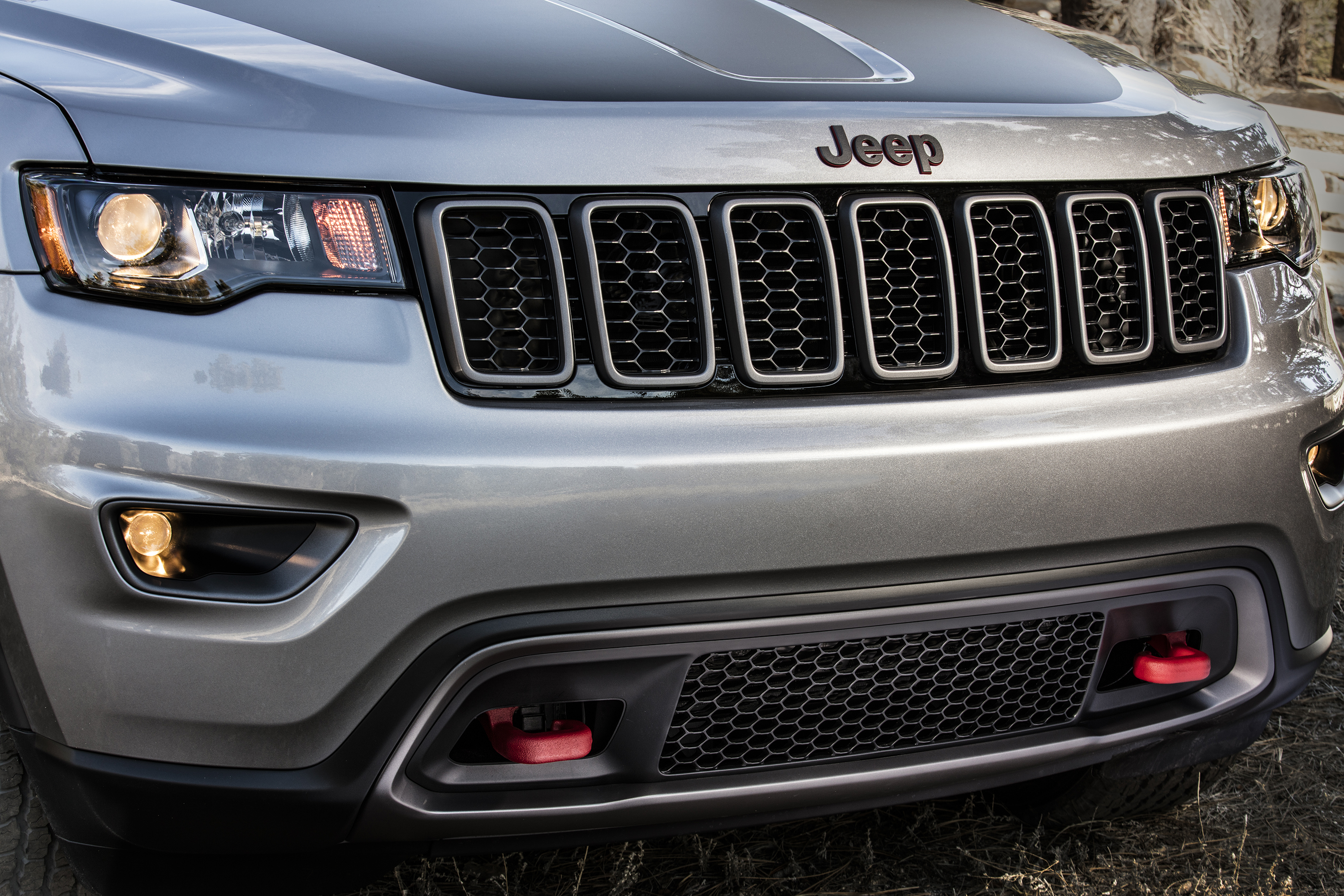
The sad part is that the Grand Cherokee could have the same system and could even work better because the gap between the headlight, fender, and hood is much larger. It would possibly require a change to the hood shape where it meets the fender and power bulge at the center, but it wouldn’t be that drastic of a change. With the airbox on only the driver’s side, the system would be simpler if only because it wouldn’t have to do it to both sides save for the hood shape. Hopefully a Jeep engineer or two saw this from Land Rover and are already on it because, if not, the New Discovery is going farther than the Grand Cherokee can.
